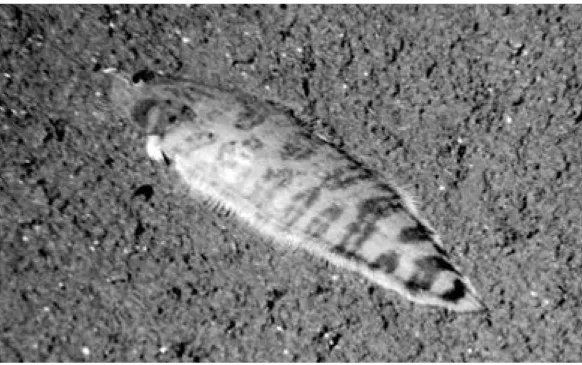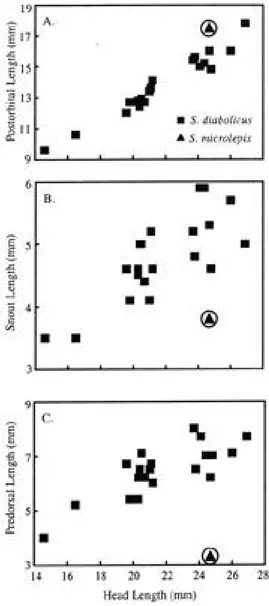Redescription of Symphurus diabolicus a poorly known, deep sea tonguefish (Pleuronectiformes: Cynoglossidae) from the Galápagos Archipelago
Texto completo
Figure




Documento similar
Cuando empecé a escribir por cuenta propia, sin que el tiempo o el espacio me condicionaran tanto como en los medios audiovisuales, recibí entre sorprendida y ali- viada la
133 Cd in the present work form a cascade of M1 transitions between the members of the multiplet expected to be lowest in 132 In, namely, the πg −1 9/2 ⊗ νf 7/2 configuration,
The evolution of the scales and fin rays in Devonian tetrapods is still a rather unexplored aspect of the ‘fish‐tetrapod transition’;
The blue triangles are source counts from the 1FHL catalog; Top left: all 1FHL sources, excluding those associated with extragalactic sources, right: 1FHL pulsars, Bottom left: all
Lo más característico es la aparición de feldespatos alcalinos y alcalino térreos de tamaño centimétrico y cristales alotriomorfos de cuarzo, a menudo en agregados policristalinos,
This problem was addressed by Mouri, Kawara & Taniguchi (2000), who compared the values of the line ratios [Fe II ] λ1.2570 μm/Paβ and [O I ] λ6300 Å/Hβ predicted by
For instance, if the Fermi-LAT Galactic center GeV gamma-ray excess was due to WIMP annihilation, its morphology would be incompatible with the standard halo model that is usually
The rays within the same cluster have the same propagation delay, and the power dispersion of a clus- ter in angle domains is characterized by cluster angular spread of departure
